More Cooking App
The Challenge
The simplest way to live a better, healthier life is to cook more. Yet cooking, whether for one or a whole family is a daunting and laborious process. Design an app which makes cooking healthy, easy.
Deliverables
Persona, user flows, user research, UX, iOS interface design, brand design, concept and strategy
KPIs
+ Increase paid downloads
+ Increase engagement to 3x/week
- Decrease self-reported frustrations with healthy cooking
*due to aquisition, metrics are unknown
Team
Sarah Argus, Product Designer
Nicolette Graves, Product Strategist
Oscar Garza, Lead Product Manger
Simon Hau, Senior Software Engineer

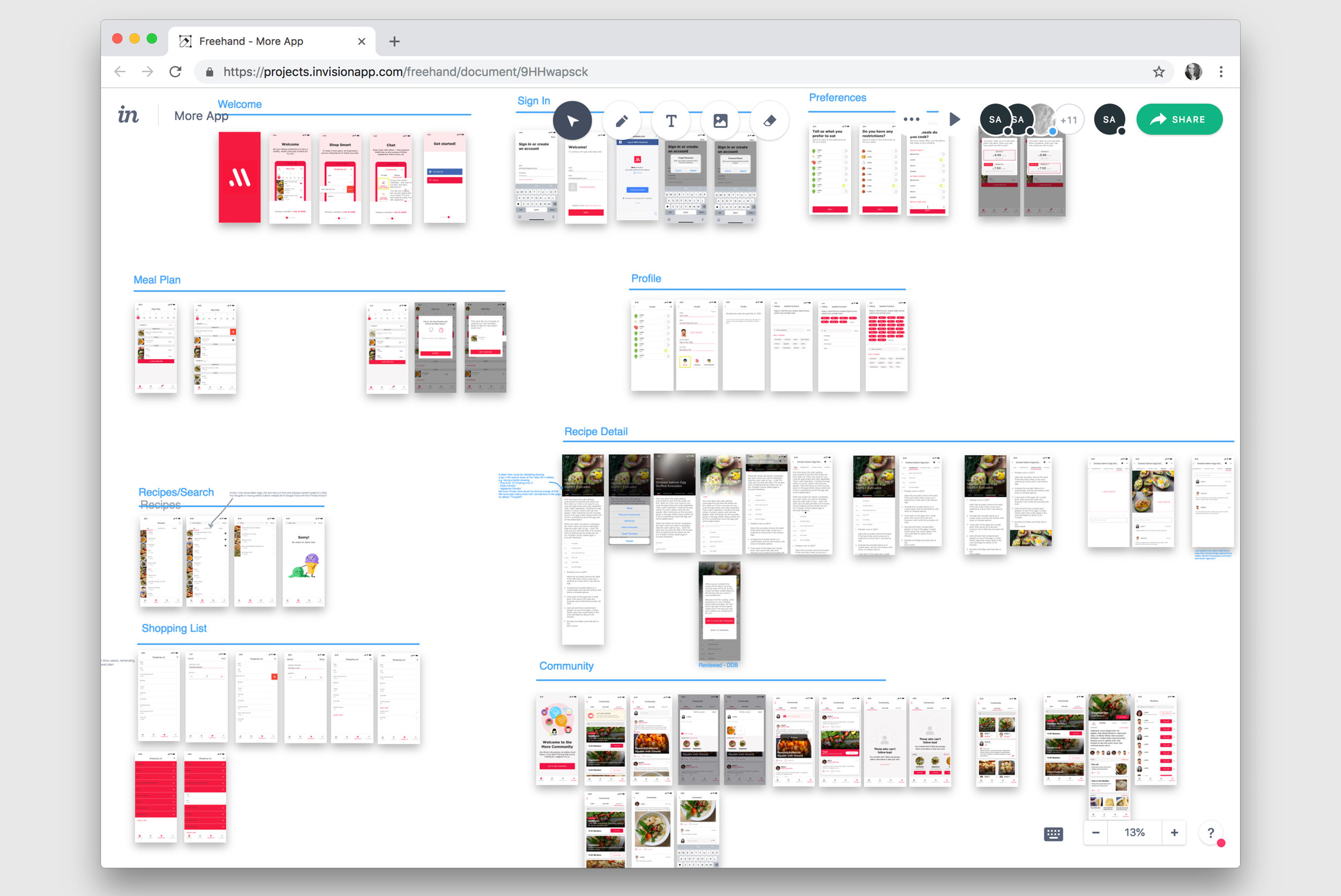

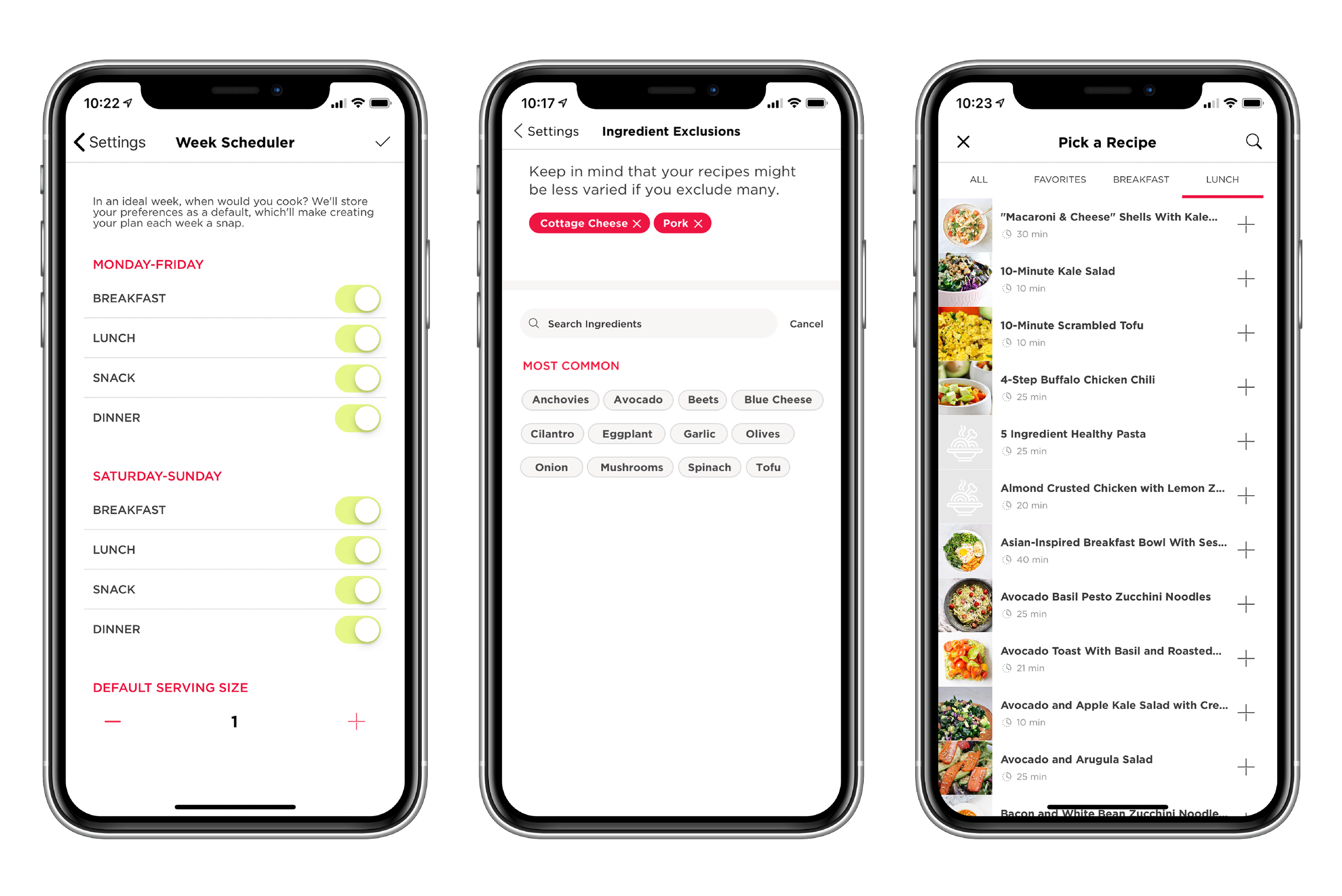
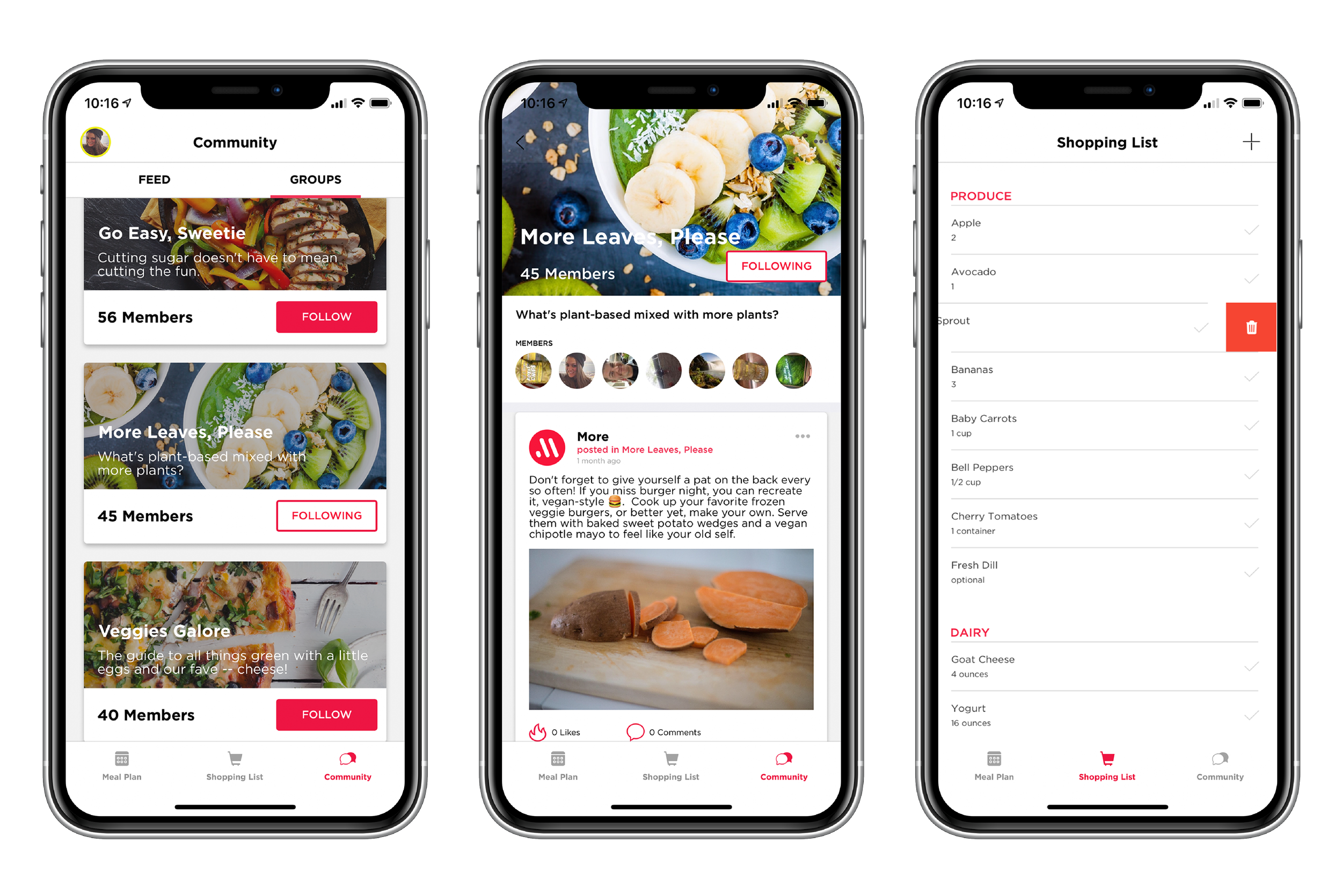

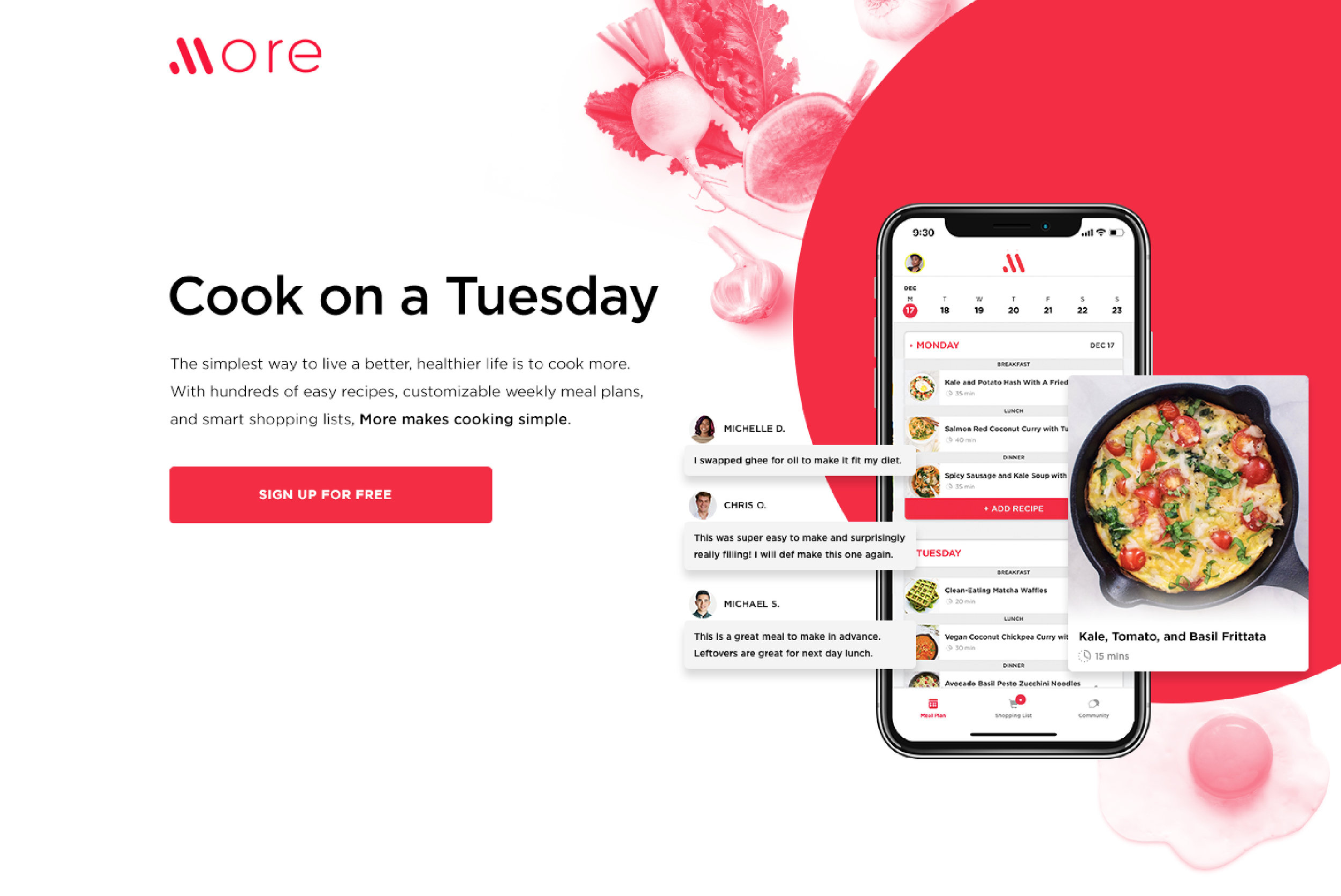
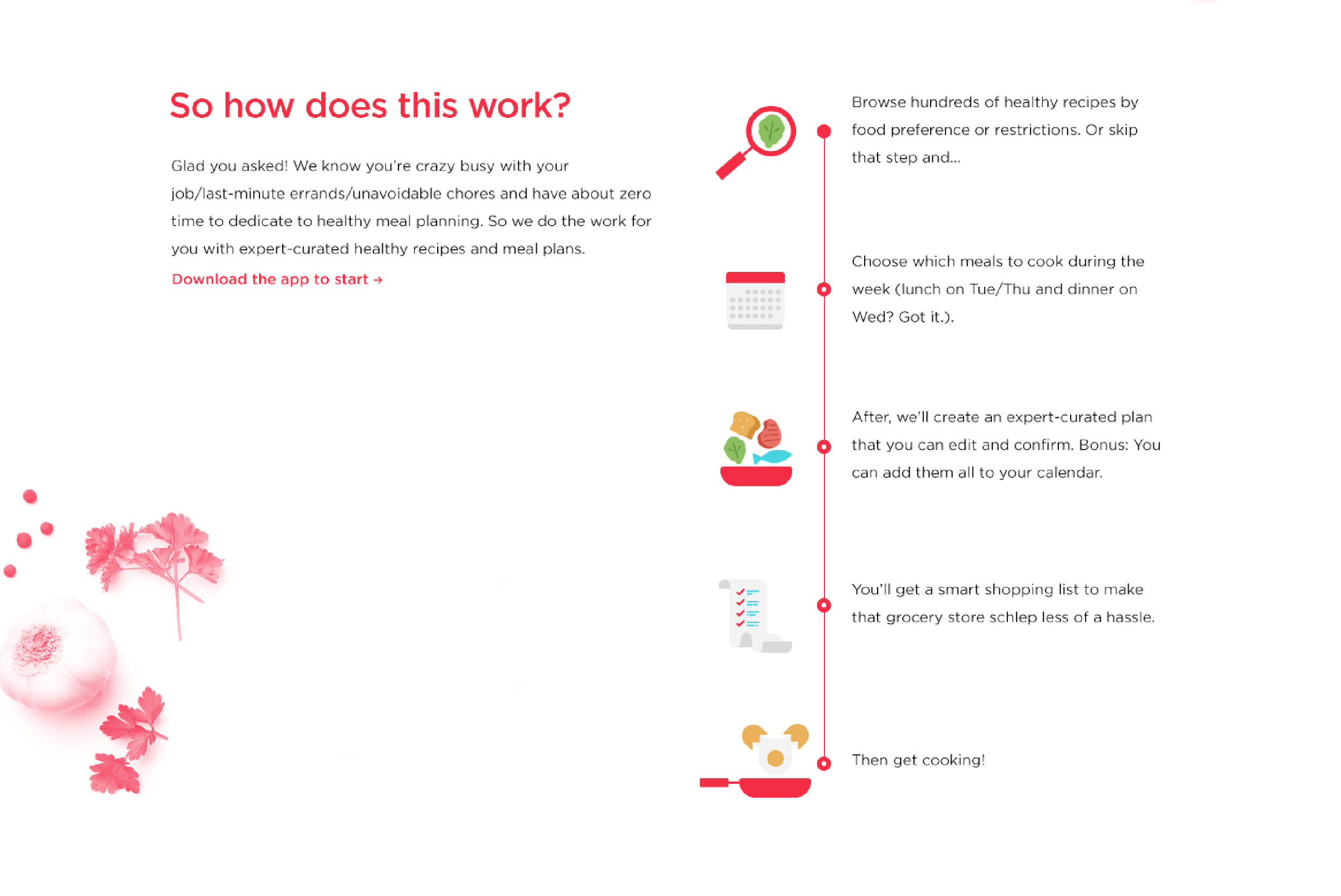
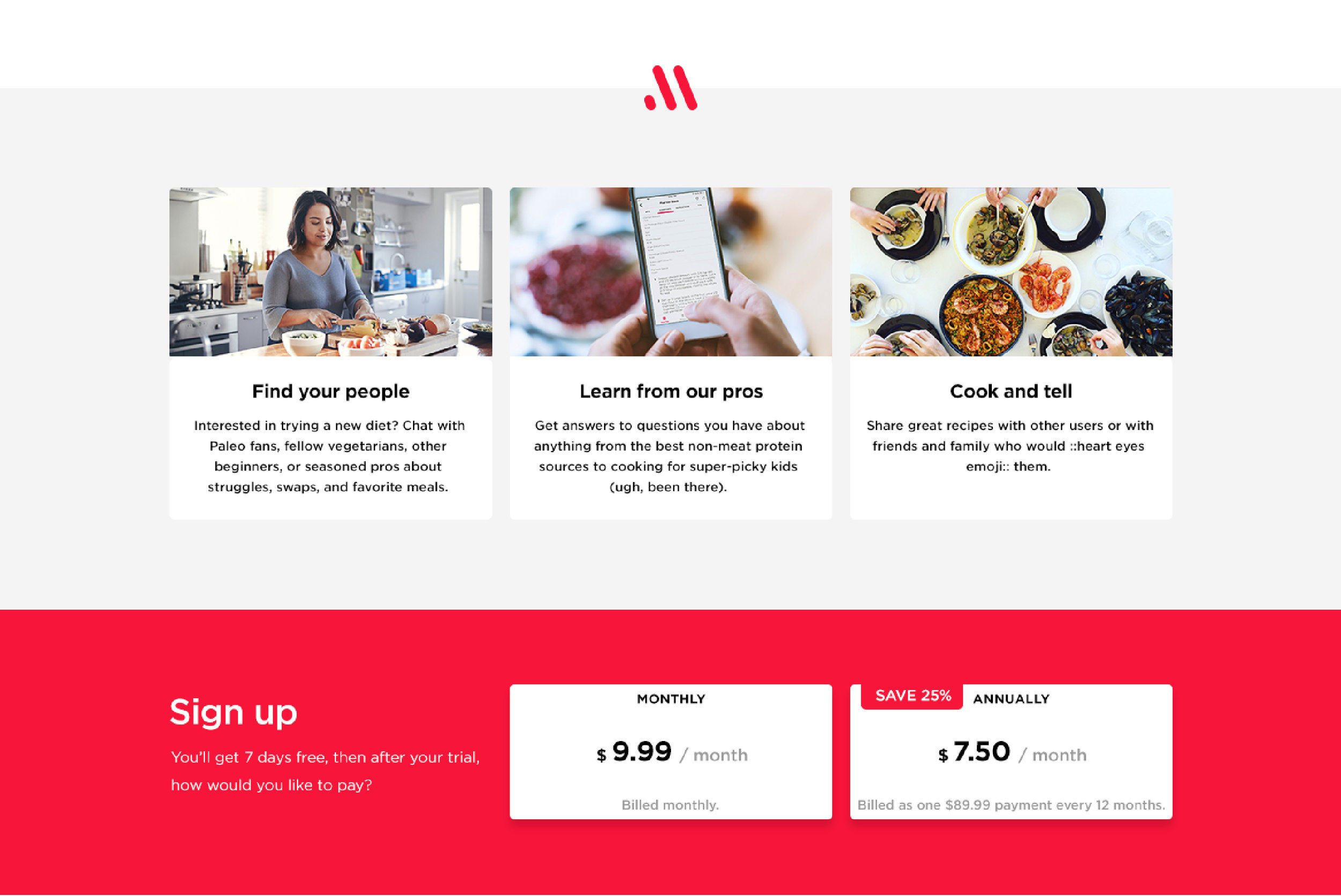
-
Research
We started a private Facebook group called “@Prepped.” We posed questions, looking for people’s pain points around planning and cooking meals. In return for feedback, we posted recipes owned by Greatist.com, a partner of the More App. In addition, we gathered more qualitative research interviewing friends and family.
Personas
We created two personas: a mother of 2 young children and husband looking to cook more frequently, and a single woman in her late 20s who was looking to lose weight but had rarely cooked.
Opportunity
After competitor analysis and user interviews we knew there was an opportunity to create a totally unique product that incorporated a lot of tools and features into one simplified experience: a custom curated healthy menu, a smart shopping list, and a community feed that included expert advice and community support.Insights
Mirroring the Weight Watchers model, we found that people were more encouraged to live a healthier life while having the option for group support.People were were frustrated when looking at recipes that listed a lot of ingredients, or a recipe that requested a unique ingredient, usually a spice, that will sit in their cupboard for years untouched.
People want to be healthy, it is the ideal.
People are overwhelmed to cook meals longer than 30 mins.
Healthy food often tastes boring and there is confusion on what you can and cannot eat on a particular diet.
People rarely trust health and diet advice unless it’s coming from a known expert or influencer.
The cost of a week’s worth of groceries was “extremely important” and would deter people from shopping off the list.
People are very picky about what they eat, however not so unique in preferences, we saw a common 12 ingredients that were disliked amongst our focus group of 28.
People could not commit to cooking every meal for all 7 days.
-
How do you enhance the act of healthy eating with community?
Cooking has always been a way to gather a group of people, and the 2000s dawned a decade where all people, not just chefs, love to ‘cook and tell’—sharing photos of things they ordered or cooked themselves. Additionally, after looking at Weight Watchers and other health groups, data showed that people who had a support system were more likely to stick to a new habit or routine. All that said, we implemented a feed where users and experts alike could swap favorite recipes, share advice, and gain support. Lastly, mirroring Facebook, we created “groups” so a user, for example, trying a vegetarian diet, could chat with seasoned pros and beginners alike.Does the app accommodate the user’s family size and can every recipe scale?
Our app automatically scaled recipes to the users family size. For example, if a recipe’s serving size was 4 and the user was single, the user would see only 1/4 measurements of the ingredients listed in their shopping cart. However, not all recipes can scale, especially when baking or making soups. We solved the problem with 2 solutions that the user could chose between: (1) we created a way for users to “un-scale” a recipe to it’s original portions and that would be reflected in the shopping list, and (2) we provide a warning to the users within the recipe, “This recipe has been scaled to the serving size indicated in your settings. See the original recipe here.”What if a user doesn't like the recipes that were picked for them?
We provide the option to swap recipes. In addition, we created a profile setting where you can indicate which ingredients you wish never appear in your meal plan. In the ingredient exclusions setting, we showcased the top disliked items with a search bar to select more unique items (as we found many people dislike similar things). I designed this screen to feel spatially limited, encouraging users to select only a few items; since the more they select, the fewer recipes available, hindering the experience. However there is a “View all” that displays all their excluded ingredients if there was a very picky eater.Why is the shopping list so long?
After machine learning, the app would create meal plans with the same core ingredients for the week. In the short term we planned a week's worth of meals, hand picking the list to minimize grocery expenses.What if a user doesn’t understand a cooking instruction, for example, saute?
We included tool tips on cooking terminology that taught users how to execute that task. -
Drunk User Testing
Once we flushed out a beta version, we participated in “Drunk User Testing,” a locally hosted event where participants drink, eat, and give feedback on your product in whatever stage it’s in. We tested the the main user flow: Sign Up > Complete your profile noting dietary restrictions and diet type > View your meal plan > Swap meals if they don’t look appealing > View your shopping cart. Download the first build here.
Iterating
We recorded user pain points from Drunk User Testing and made appropriate edits. Including:Our weekly meal plan appeared overwhelming as one long list so I decided a card view would be best
Some of the icons used for simplicity caused confusing (example a circular repeat symbol was replaced by the word “swap”
Users wanted the shopping list to work as their main source of truth while shopping so we added an “add your own item” feature allowing user to add things like toilet paper and more.
